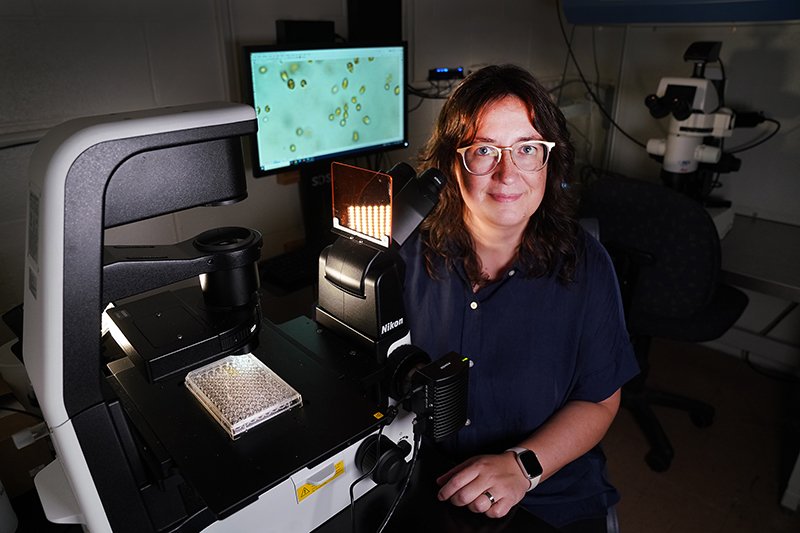Jennifer Weiscover, an associate professor of biochemistry at Purdue University, studies genetic variations in single-celled algae associated with algal blooms. The monitor shows a specimen of Prymnesium parvum, which causes ecologically harmful algal blooms around the world, including much of the United States. (Photo by Purdue Agricultural Communications/Tom Campbell)
Body of the article: A research team led by Jennifer Weiscover, an associate professor of biochemistry at Purdue University, has identified the hidden genetic makeup of a microbe that’s causing toxic algal blooms in at least 24 states. The study on the microbe, Prymnesium parvum, was recently published in the journal Current Biology and could help predict when ecosystem-disrupting algal blooms will occur.
Article Title
Extreme genomic diversity and cryptic speciation in harmful algal bloom eukaryotes
author
Robert Ober, Biochemistry Graduate Student
William Driscoll, Assistant Professor of Biology, University of Pennsylvania, Harrisburg
Shauna Manning, Assistant Professor of Biological Sciences, Florida International University
Bradley Moore, Professor of Marine Chemical Biology (UCSD)
Timothy Fallon, Postdoctoral Researcher, Marine Biotechnology and Biomedical Center, UCSD
Amanda Pendleton, Postdoctoral Researcher, Biochemistry
Olivia Riedling, Biochemistry Student
Nathan Watervoort, graduate student at the PULSE Plant Biology Center
Jennifer Weiscover, Associate Professor of Biochemistry
journal
Current Biology, 2023
Read the full story
https://www.cell.com/current-biology/fulltext/S0960-9822(23)00597-3
Article Summary
By studying the genomes of 15 different strains of a microbe that causes harmful algal blooms (Prymnesium parvum), Purdue researchers found a surprising amount of diversity in the genetic makeup of the bacterium. They also discovered that a common laboratory strain of the bacterium is a hybrid of two different strains. The genomic information provided by this study provides a solid foundation for studying the ecological and physiological effects of genetic variation within and between P. parvum species and highlights the need for similar resources for other types of harmful algal blooms.

